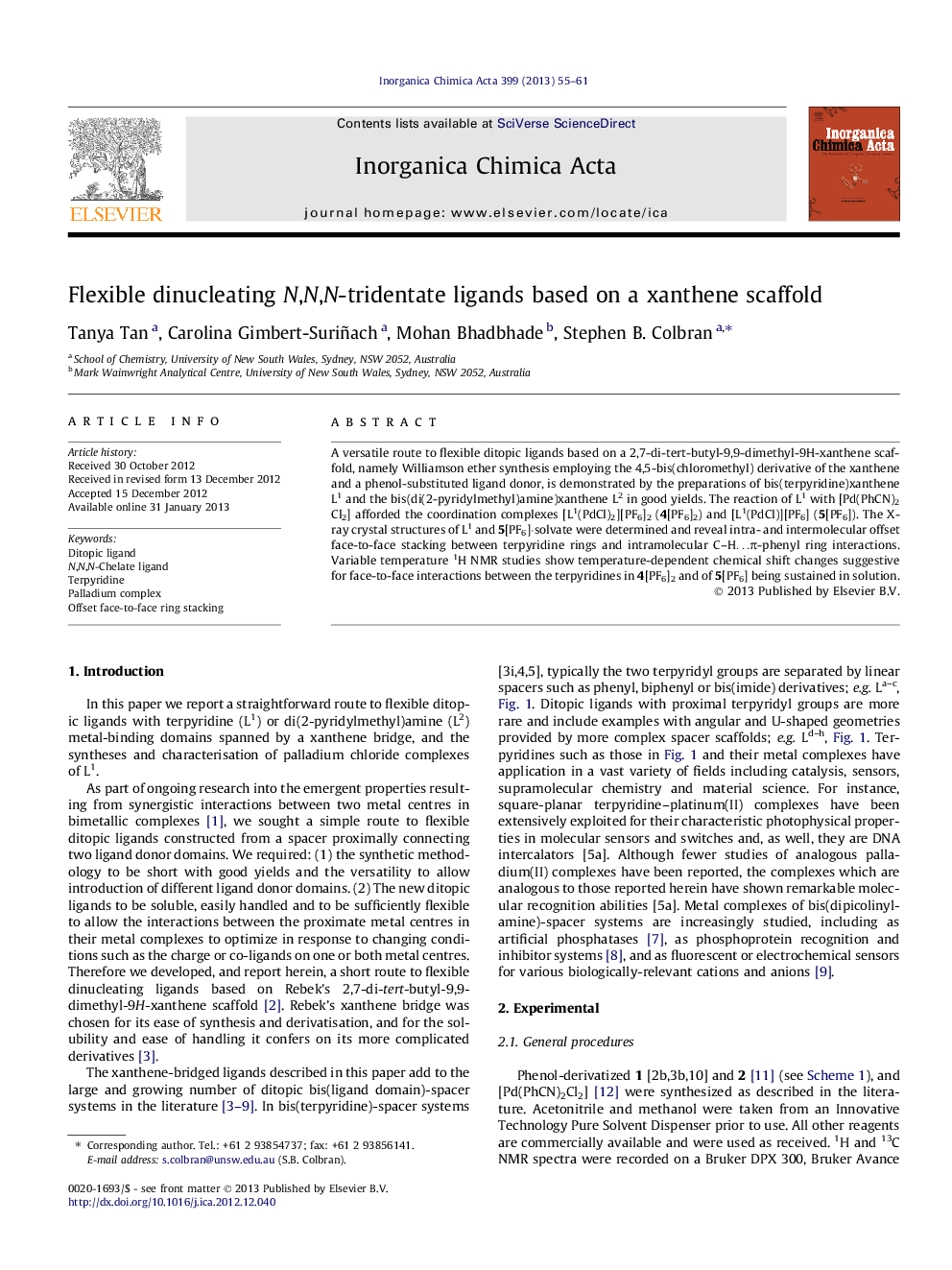| Article ID | Journal | Published Year | Pages | File Type |
|---|---|---|---|---|
| 1307194 | Inorganica Chimica Acta | 2013 | 7 Pages |
A versatile route to flexible ditopic ligands based on a 2,7-di-tert-butyl-9,9-dimethyl-9H-xanthene scaffold, namely Williamson ether synthesis employing the 4,5-bis(chloromethyl) derivative of the xanthene and a phenol-substituted ligand donor, is demonstrated by the preparations of bis(terpyridine)xanthene L1 and the bis(di(2-pyridylmethyl)amine)xanthene L2 in good yields. The reaction of L1 with [Pd(PhCN)2Cl2] afforded the coordination complexes [L1(PdCl)2][PF6]2 (4[PF6]2) and [L1(PdCl)][PF6] (5[PF6]). The X-ray crystal structures of L1 and 5[PF6]·solvate were determined and reveal intra- and intermolecular offset face-to-face stacking between terpyridine rings and intramolecular C–H…π-phenyl ring interactions. Variable temperature 1H NMR studies show temperature-dependent chemical shift changes suggestive for face-to-face interactions between the terpyridines in 4[PF6]2 and of 5[PF6] being sustained in solution.
Graphical abstractA versatile route to flexible ditopic ligands based on a xanthene scaffold is described; face-to-face inter-ring stacking interactions in a ditopic bis(tepyridyl)xanthene ligand and its palladium(II) chloride complexes are revealed by NMR and X-ray crystallographic studies.Figure optionsDownload full-size imageDownload as PowerPoint slideHighlights► A versatile synthesis of flexible dinucleating ligands is described. ► Palladium(II) complexes were prepared from a bis(terpyridyl)xanthene. ► The bis(terpyridyl) ligand and its metal complexes display π–π stacking interactions.
